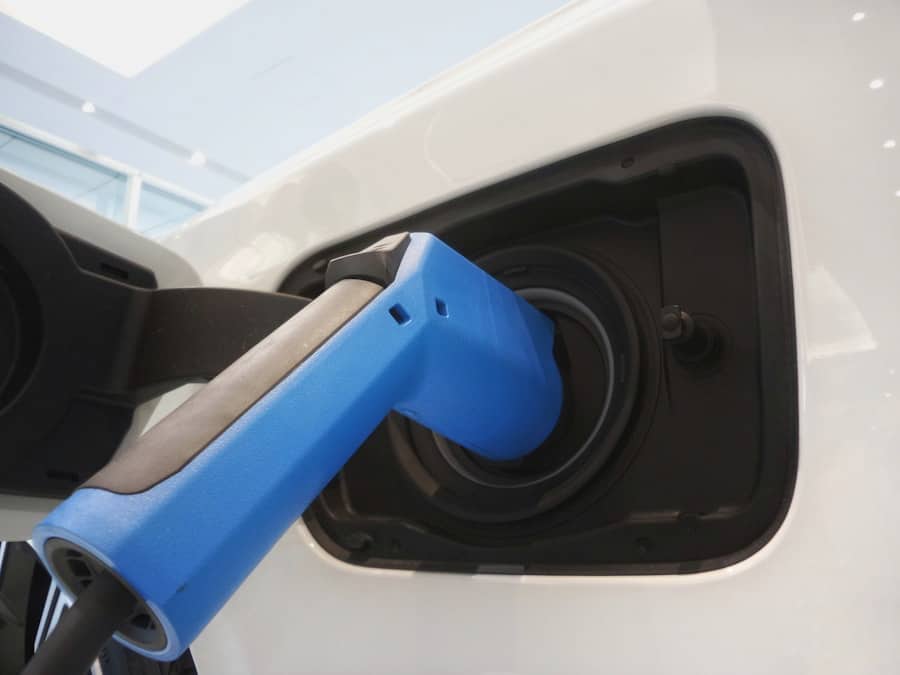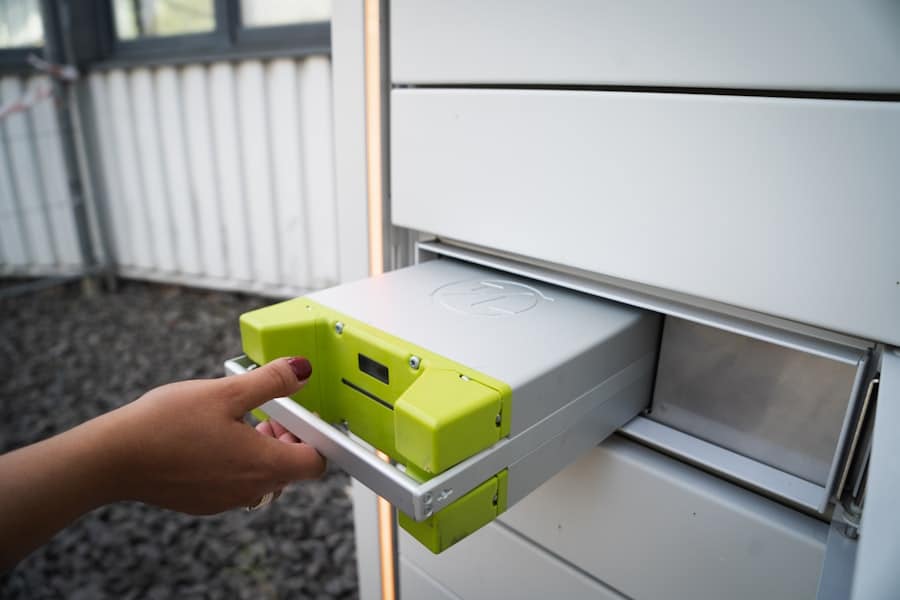Wireless charging technology has undergone a remarkable transformation since its inception, evolving from rudimentary concepts to sophisticated systems that power a wide array of devices. The roots of wireless charging can be traced back to the late 19th century when Nikola Tesla demonstrated the principles of wireless energy transfer. His experiments with resonant inductive coupling laid the groundwork for future developments, although practical applications remained elusive for decades.
It wasn’t until the early 2000s that significant advancements began to emerge, driven by the proliferation of portable electronic devices and the need for more convenient charging solutions. The introduction of the Qi standard by the Wireless Power Consortium in 2008 marked a pivotal moment in the evolution of wireless charging.
The first commercial Qi-enabled products began to appear in 2010, primarily targeting smartphones and other small electronics. As consumer demand for wireless charging grew, so did the technology’s capabilities, leading to faster charging speeds and improved efficiency. By the mid-2010s, major smartphone manufacturers began integrating wireless charging into their flagship models, further solidifying its place in the consumer electronics landscape.
Key Takeaways
- Wireless charging technology has evolved from simple induction-based charging to more advanced technologies like magnetic resonance and radio frequency.
- Wireless charging has had a significant impact on consumer devices, enabling more convenience and flexibility in charging smartphones, smartwatches, and other gadgets.
- Advantages of wireless charging include convenience, reduced wear and tear on charging ports, and the elimination of tangled cords, while disadvantages include slower charging speeds and higher cost.
- Wireless charging plays a crucial role in the Internet of Things (IoT) by enabling seamless and efficient power transfer for interconnected devices.
- Emerging trends and innovations in wireless charging include longer range charging, integration with furniture and vehicles, and improved efficiency in power transfer.
The Impact of Wireless Charging on Consumer Devices
The integration of wireless charging technology into consumer devices has significantly altered how users interact with their gadgets. One of the most notable impacts is the enhanced convenience it offers. Users no longer need to fumble with cables or worry about wear and tear on charging ports.
Instead, they can simply place their devices on a charging pad or stand, making the process seamless and intuitive. This shift has been particularly beneficial in environments where multiple devices are used simultaneously, such as homes and offices, allowing for a clutter-free experience. Moreover, wireless charging has influenced device design and aesthetics.
Manufacturers are increasingly designing products with sleek, minimalist profiles that eliminate the need for visible ports. This trend is evident in smartphones, smartwatches, and even laptops that now feature wireless charging capabilities. The absence of physical connectors not only enhances the visual appeal but also contributes to improved water and dust resistance, as fewer openings reduce potential entry points for contaminants.
As a result, consumers are presented with devices that are not only functional but also stylish and durable.
Advantages and Disadvantages of Wireless Charging
While wireless charging offers numerous advantages, it is essential to consider its drawbacks as well. One of the primary benefits is convenience; users can charge their devices simply by placing them on a pad without needing to connect cables. This ease of use is particularly advantageous in public spaces like cafes or airports, where multiple users may need to charge their devices simultaneously.
Additionally, wireless charging can help reduce wear on charging ports, potentially extending the lifespan of devices. However, there are notable disadvantages associated with this technology. One significant concern is charging speed; wireless charging is generally slower than traditional wired charging methods.
While advancements have been made to increase efficiency, many users still find themselves waiting longer for their devices to reach full charge. Furthermore, wireless charging can generate heat during the process, which may affect battery longevity over time if not managed properly. Additionally, the need for compatible chargers can lead to increased costs for consumers who must invest in new accessories.
The Role of Wireless Charging in the Internet of Things (IoT)
As the Internet of Things (IoT) continues to expand, wireless charging technology plays a crucial role in facilitating seamless connectivity among devices. IoT encompasses a vast network of interconnected devices that communicate and share data, ranging from smart home appliances to wearable technology. Wireless charging enables these devices to remain powered without the hassle of frequent manual recharging or cable management, thus enhancing user experience and promoting greater adoption of IoT solutions.
For instance, smart home devices such as security cameras, smart speakers, and sensors can benefit from wireless charging by eliminating the need for battery replacements or cumbersome power cords. This not only simplifies installation but also encourages users to integrate more IoT devices into their homes without worrying about power sources. Furthermore, as IoT devices become more prevalent in various sectors such as healthcare and transportation, reliable power solutions like wireless charging will be essential for maintaining continuous operation and data transmission.
Emerging Trends and Innovations in Wireless Charging
The landscape of wireless charging is rapidly evolving, with several emerging trends and innovations shaping its future. One notable trend is the development of resonant inductive charging systems that allow for greater distances between the charger and the device being charged. This advancement could enable multiple devices to be charged simultaneously from a single power source without requiring precise alignment.
Such technology could revolutionize how we think about charging stations in public spaces or even within our homes. Another exciting innovation is the integration of wireless charging into furniture and everyday objects. Companies are exploring ways to embed charging pads into tables, desks, and even car interiors, allowing users to charge their devices effortlessly while going about their daily activities.
This trend not only enhances convenience but also promotes a more connected lifestyle where users can remain powered up without interrupting their routines. As these innovations continue to develop, they will likely lead to broader acceptance and adoption of wireless charging technology across various sectors.
The Future of Wireless Charging in Consumer Devices
Looking ahead, the future of wireless charging in consumer devices appears promising as technology continues to advance at a rapid pace.
Researchers are actively exploring new materials and designs that could enhance energy transfer rates while minimizing heat generation, making it feasible for consumers to enjoy quick top-ups without compromising battery health.
Additionally, as electric vehicles (EVs) gain traction in the automotive market, wireless charging technology is poised to play a significant role in this sector as well. Companies are developing systems that allow EVs to charge wirelessly while parked or even while driving over specially equipped roadways. This innovation could alleviate concerns about range anxiety and make electric vehicles more appealing to consumers by simplifying the charging process.
As these advancements unfold, we can expect wireless charging to become an integral part of our daily lives across various domains.
Environmental and Sustainability Benefits of Wireless Charging
Wireless charging technology also presents several environmental and sustainability benefits that align with global efforts to reduce electronic waste and promote greener practices. One significant advantage is the reduction in the number of physical cables required for charging devices. Traditional wired chargers often contribute to e-waste when they become obsolete or damaged; by contrast, wireless chargers can serve multiple devices over their lifespan without generating additional waste.
Moreover, as manufacturers increasingly focus on energy efficiency in their designs, wireless charging systems are being optimized to minimize energy loss during the transfer process. This not only reduces electricity consumption but also contributes to lower carbon emissions associated with power generation. Additionally, as more consumers adopt renewable energy sources such as solar panels for their homes, pairing these systems with wireless charging solutions can create a sustainable ecosystem where clean energy powers everyday devices.
Considerations for Consumers when Choosing Wireless Charging Devices
When selecting wireless charging devices, consumers should consider several factors to ensure they make informed choices that meet their needs. Compatibility is paramount; not all devices support every wireless charging standard, so it is essential to verify that both the charger and device are compatible with each other—most commonly with Qi standards for smartphones and accessories. Additionally, consumers should assess the power output of chargers; higher wattage options may provide faster charging speeds but may also require compatible devices to take full advantage.
Another important consideration is design and placement; some consumers may prefer sleek pads that blend seamlessly into their decor while others might opt for stands that allow for easy viewing during charging. Furthermore, potential users should evaluate safety features such as overheat protection and foreign object detection to ensure safe operation during use. By taking these factors into account, consumers can select wireless charging solutions that enhance their experience while aligning with their lifestyle preferences and device requirements.
If you’re interested in learning more about the latest technology news and reviews, be sure to check out this software recommended by Enicomp. And for those interested in furniture design, Enicomp also offers a guide to the




